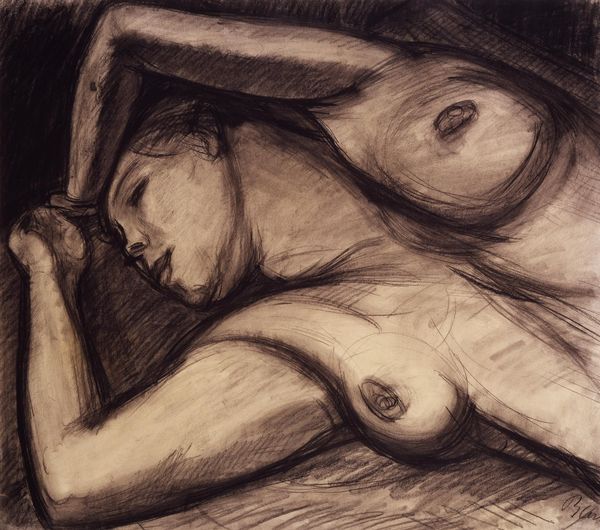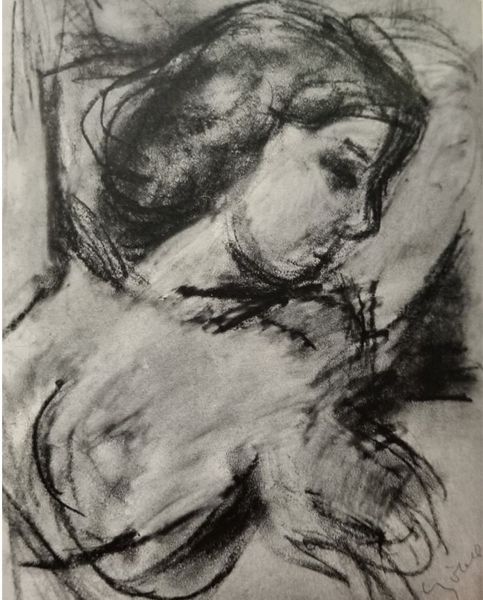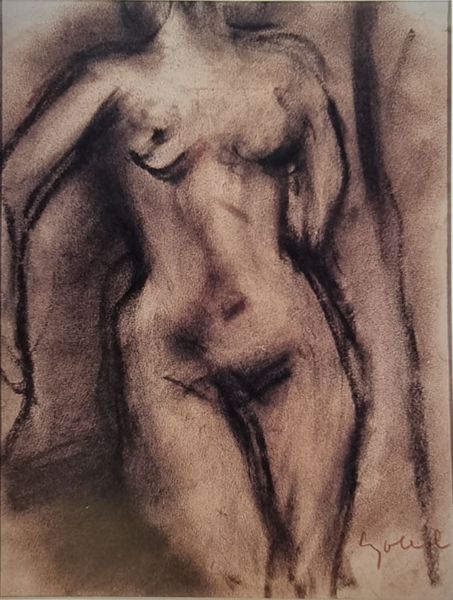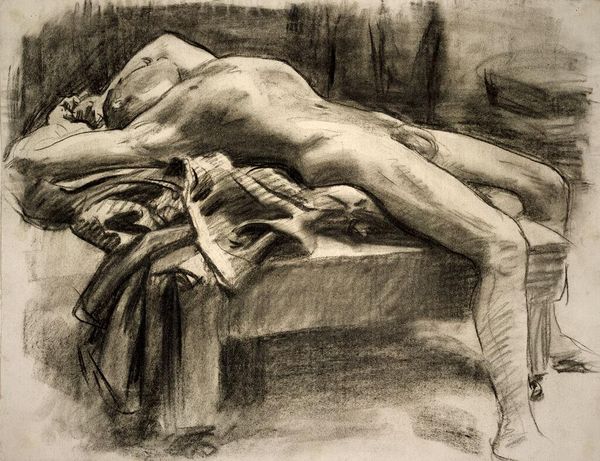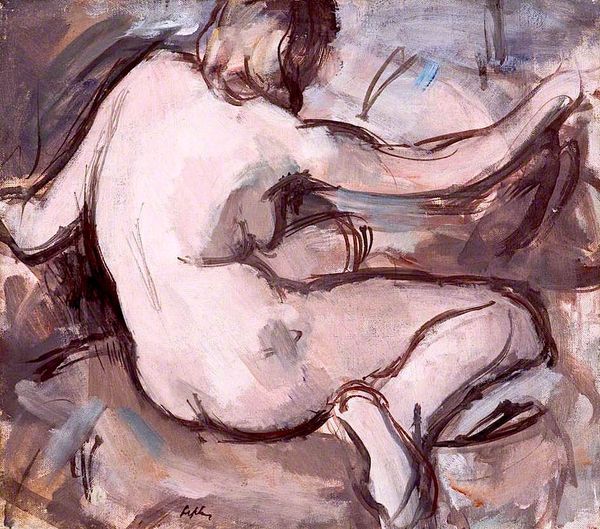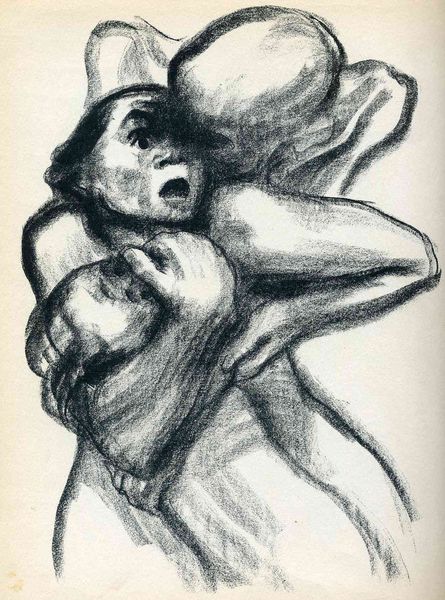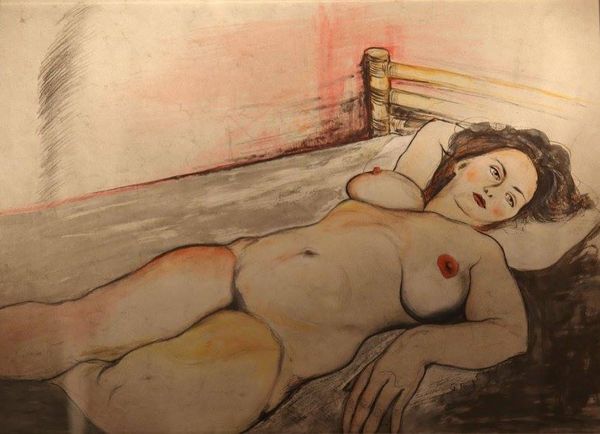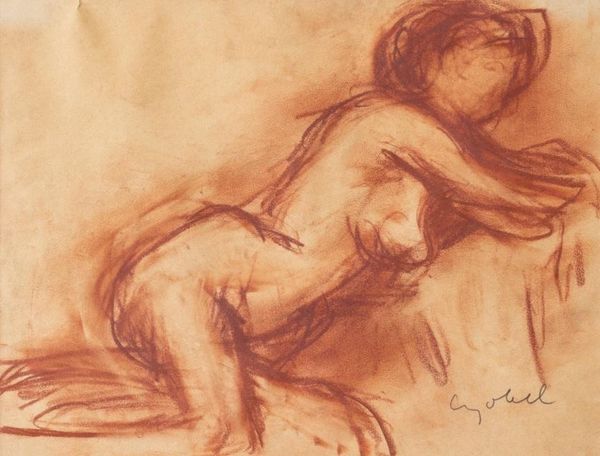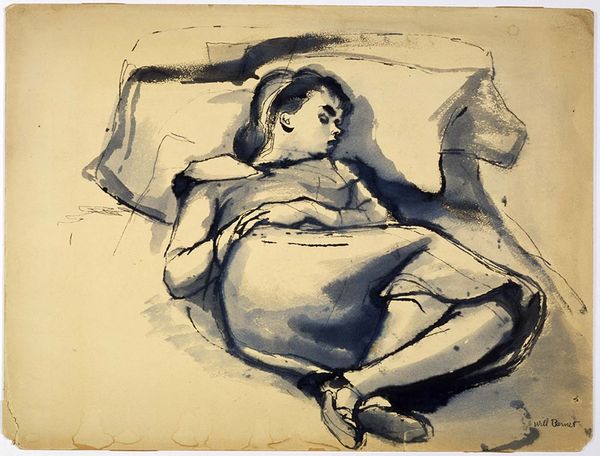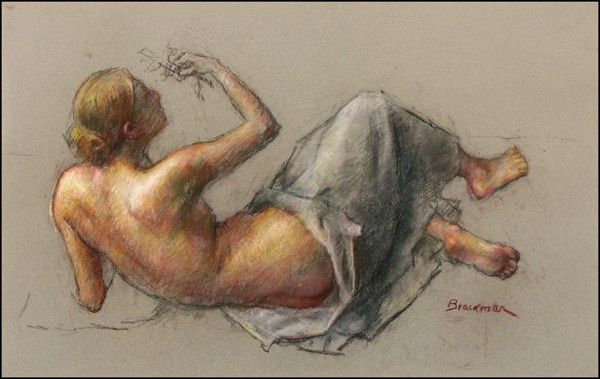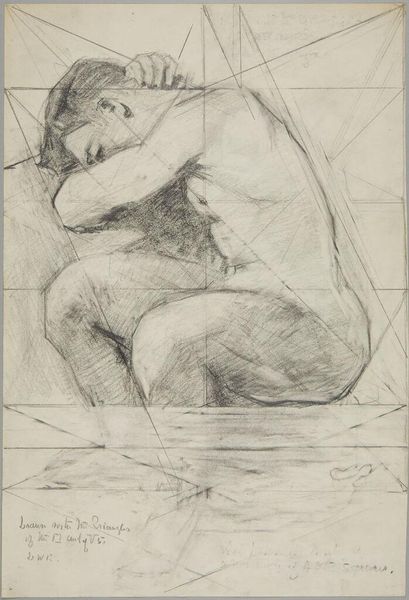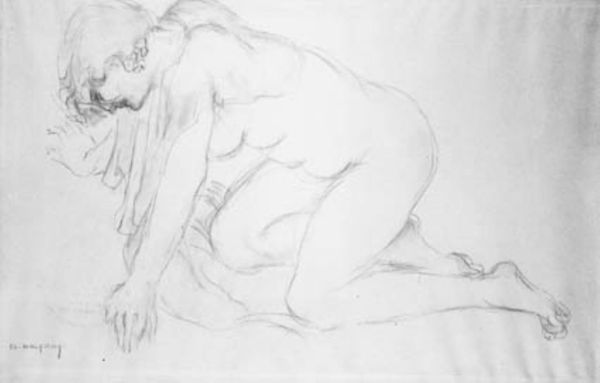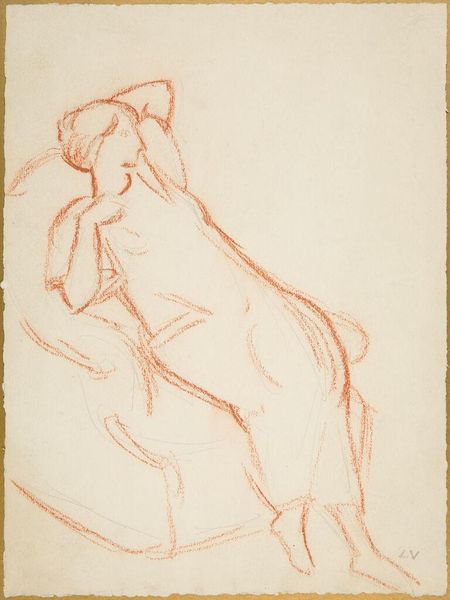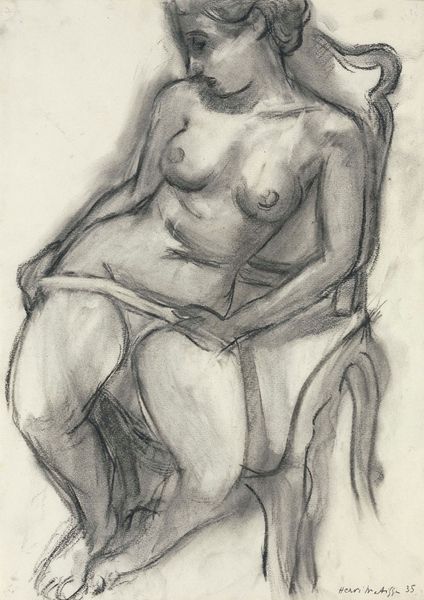
drawing, charcoal
#
portrait
#
drawing
#
charcoal drawing
#
figuration
#
line
#
charcoal
#
nude
Copyright: Zoe Lerman,Fair Use
Editor: So, we're looking at "Nude" by Zoe Lerman, a charcoal drawing from 1991. There's this sort of raw vulnerability in the sketchiness of it, almost unfinished. How do you interpret this work in its historical context? Curator: Well, considering this was created in 1991, just after the collapse of the Soviet Union, it is quite striking. We often see the female nude throughout art history presented as an object, passively awaiting the gaze of the viewer, most often a male viewer. Lerman’s piece appears to both acknowledge and subvert this tradition. Editor: How so? Curator: Note the way the figure is almost defensively curled in on itself, drawing attention to its vulnerability and questioning its inherent sensuality. The harsh, broken lines, especially given the period, make me think of how societal structures were perceived to be fracturing or were being redefined for this artist. Editor: That's a great point; it does seem to almost resist being easily consumed as an image. What do you make of those bold, almost gestural, red lines? Curator: Excellent observation! The red adds a layer of...perhaps restrained tension? They frame the figure but don't confine her. Given the political context, are those lines borders perhaps? Are they suggestive of a restrictive system? Consider that many formerly communist nations were creating newly defined borders, a visual division across the cultural landscape. Editor: I never would have considered that interpretation! I just thought it was an interesting formal element. Curator: Well, that's the beauty of art history, isn't it? We're always layering meaning and context onto visual experience! Editor: Definitely gives me a lot to think about in terms of art and social narrative. Thanks for sharing that insightful point of view.
Comments
No comments
Be the first to comment and join the conversation on the ultimate creative platform.
